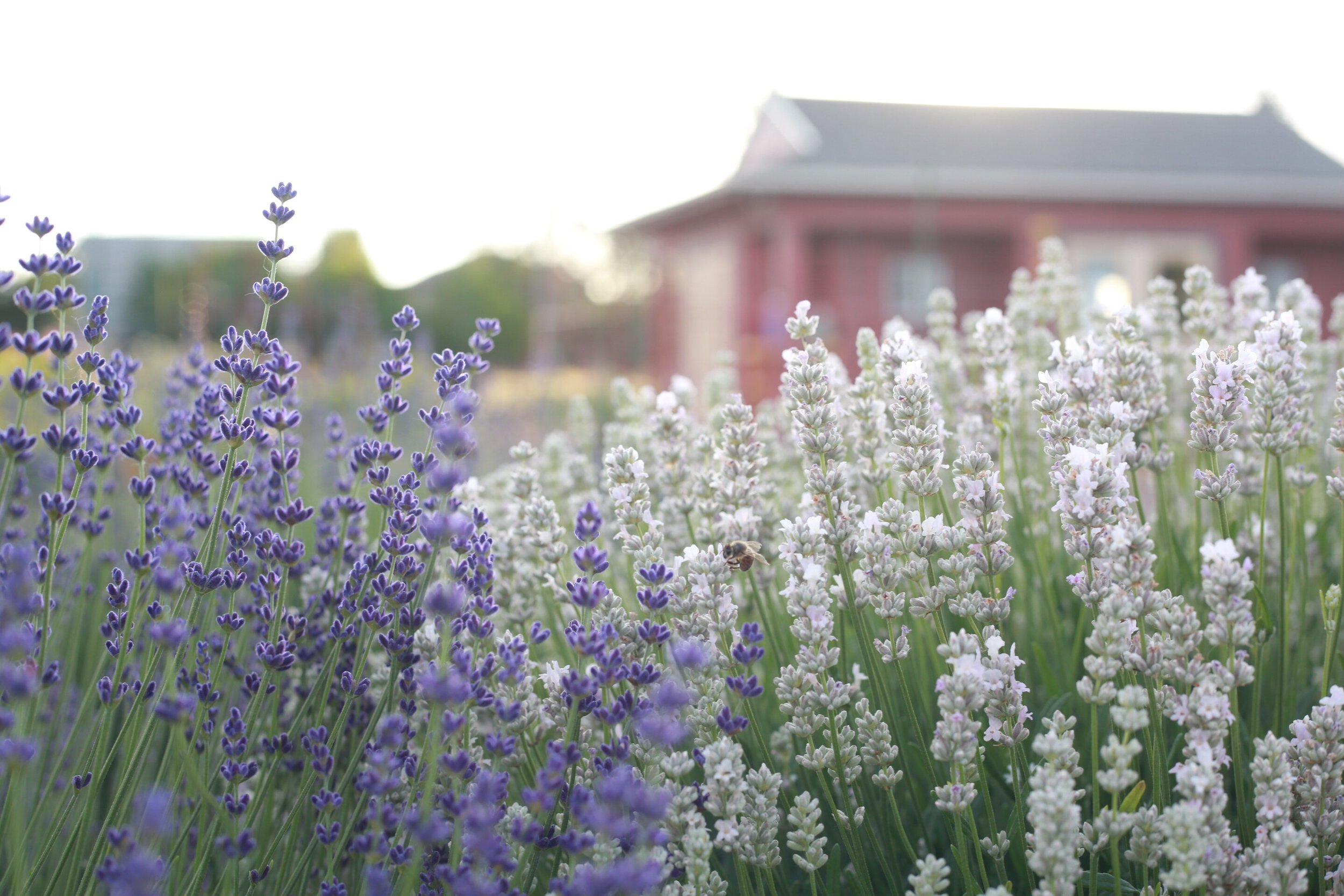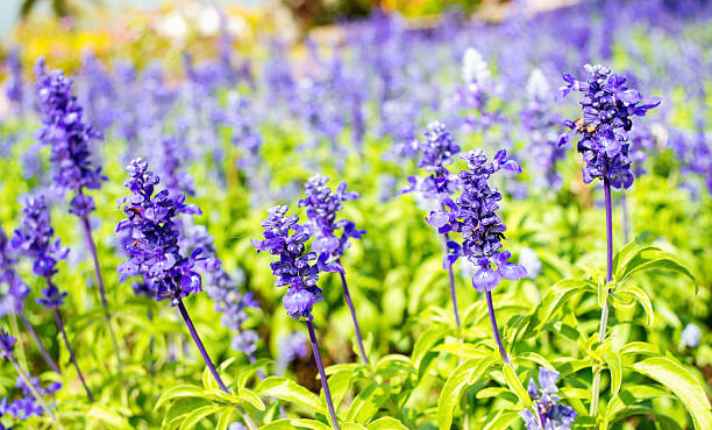15 Companion Plants To Grow With Lavender
Unlock the Secrets to a Thriving Garden with Lavender and Its Best Neighbors
Lavender is one of the most beloved fragrant herbs, prized not only for its beautiful flowers and soothing scent but also for its versatility in the garden. Beyond its standalone appeal, lavender is a fantastic companion plant that enhances the growth and health of many other plants.
If you want to create a vibrant, balanced, and pest-resistant garden, understanding which plants pair best with lavender is key. This guide covers 15 top companion plants for lavender, how to plant and care for them together, and advanced gardening strategies to make your garden flourish.

Why Grow Companion Plants With Lavender?
1. Enhanced Pest Control
Lavender’s strong fragrance naturally repels many garden pests such as moths, fleas, and whiteflies. Companion plants can benefit from this protection when grown nearby.
2. Improved Pollination
Lavender attracts bees, butterflies, and other pollinators. Planting compatible companions nearby can increase pollination rates for flowers, fruits, and vegetables.
3. Soil and Microclimate Benefits
Lavender prefers well-draining, slightly alkaline soil and full sun. Companion plants with similar preferences reduce soil stress and promote a balanced microclimate.
4. Aesthetic Harmony
Combining lavender with complementary plants enhances the garden’s visual appeal, creating textures and colors that elevate the landscape.
15 Best Companion Plants to Grow With Lavender

1. Rosemary
Both lavender and rosemary thrive in full sun with well-drained soil. Rosemary’s needle-like leaves contrast beautifully with lavender’s soft spikes. Plus, both repel pests such as aphids and mosquitoes.
2. Sage
Sage shares lavender’s preference for dry, sunny spots. Together, they form a Mediterranean herb duo that deters common pests and adds culinary versatility.
3. Thyme
Low-growing thyme creates a fragrant ground cover beneath lavender. This combination suppresses weeds and attracts beneficial pollinators.
4. Catmint (Nepeta)
Catmint’s blue-purple flowers complement lavender’s blooms. It attracts bees and deters pests like aphids, creating a synergistic insectary.
5. Echinacea (Coneflower)
Echinacea’s upright pink or purple flowers pair well with lavender’s soft hues. Both plants attract butterflies and bees, enhancing pollination.
6. Yarrow
Yarrow tolerates dry conditions and attracts predatory insects that control aphids and other pests. Its feathery foliage pairs nicely with lavender.
7. Alliums
Alliums, like ornamental onions, deter pests such as aphids and carrot flies. Their spherical blooms provide textural contrast to lavender’s spires.
8. Sedum
Sedums are drought-tolerant succulents that thrive in the same conditions as lavender. Their fleshy leaves and star-shaped flowers offer visual diversity.
9. Roses
Lavender planted near roses helps repel aphids and enhances rose fragrance. The combination also improves garden aesthetics with soft purples and rich rose colors.
10. Salvia
Closely related to lavender, salvias bloom in vibrant colors that complement lavender’s pastel tones. Both attract pollinators and thrive in sunny, well-drained soil.
11. Gaillardia (Blanket Flower)
Gaillardias tolerate heat and drought, making them perfect partners for lavender. Their bright reds and oranges add warmth to lavender’s cool palette.
12. Santolina (Lavender Cotton)
This drought-tolerant shrub has silvery foliage that complements lavender’s leaves and helps deter pests.
13. Feverfew
Feverfew’s daisy-like flowers attract pollinators and beneficial insects, while its bitter leaves help repel harmful bugs.
14. Ornamental Grasses
Drought-tolerant grasses like blue fescue add height and movement, contrasting with lavender’s structure.
15. Marigolds
Marigolds’ pest-repellent properties complement lavender, and their bright colors can add vibrancy next to lavender’s purples.
How to Plant Lavender and Its Companion Plants

Soil Preparation
Lavender prefers sandy, well-draining soil with a pH between 6.7 and 7.3. Amend clay or heavy soils with sand or gravel to improve drainage. Companion plants should have similar soil needs.
Sunlight Requirements
Plant lavender and its companions in full sun—at least 6-8 hours daily—to ensure optimal growth.
Spacing
Space plants adequately (usually 12-24 inches apart) to allow airflow and reduce disease risk.
Watering
Lavender thrives with moderate watering but dislikes soggy roots. Many companion plants prefer similar watering schedules—allow soil to dry between watering.
Fertilizing
Lavender does well with minimal fertilization. Use low-nitrogen, slow-release fertilizers sparingly. Companion plants with higher nutrient needs may require targeted fertilization.
Advanced Tips for Growing Lavender with Companion Plants

1. Group by Water Needs
Cluster companion plants with similar water requirements near lavender to avoid over- or underwatering.
2. Use Lavender as a Pest Barrier
Plant lavender around vegetable beds or more vulnerable ornamentals to deter pests naturally.
3. Extend Bloom Time
Combine lavender with companions that bloom earlier or later to ensure continuous garden color and pollinator attraction.
4. Employ Succession Planting
Stagger planting times of companion flowers to maintain a dynamic and ever-blooming garden.
5. Mulch Wisely
Use gravel or light-colored mulch to reflect sunlight, improve drainage, and keep roots cool.
Common Issues and Troubleshooting
| Problem | Cause | Solution |
|---|---|---|
| Lavender leaves turning brown | Overwatering or poor drainage | Improve soil drainage; water less |
| Companion plants wilting | Incompatible water/light needs | Adjust watering; choose compatible plants |
| Pest infestation | Aphids, mites, or whiteflies | Encourage beneficial insects; use organic sprays |
| Powdery mildew on leaves | Poor air circulation, humidity | Space plants well; prune affected parts |
| Companion plant overgrowth | Aggressive spreading or competition | Regular pruning; maintain spacing |
Table of Contents
FAQs About Growing Lavender With Companion Plants
What makes a good companion plant for lavender?
Plants that thrive in similar conditions—full sun, well-draining soil, and moderate watering—and benefit from lavender’s pest-repelling scent make the best companions.
Can lavender grow with vegetables?
Yes, lavender can be planted near vegetables like cabbage and tomatoes to help repel pests and attract pollinators.
Will lavender compete with other plants for nutrients?
Lavender is relatively low-maintenance and does not aggressively compete for nutrients, but proper spacing ensures all plants thrive.
How far should companion plants be spaced from lavender?
Generally, space companion plants 12-24 inches apart depending on their mature size to allow airflow and reduce disease risk.
Does lavender attract pollinators?
Yes, lavender is a magnet for bees, butterflies, and other beneficial pollinators.
Can I plant lavender and roses together?
Yes, lavender complements roses aesthetically and helps deter pests like aphids.
What soil pH is best for lavender and its companions?
A slightly alkaline to neutral pH (6.7 to 7.3) suits lavender and most of its companions.
How often should I water lavender and companion plants?
Water sparingly, allowing the soil to dry out between watering. Most companions suitable for lavender have similar watering needs.
Can lavender be used as a pest deterrent for vegetable gardens?
Yes, planting lavender near vegetables can reduce pest pressure due to its strong scent.
What is the best time to plant lavender with companion plants?

Plant lavender in spring or early fall. Companion plants can be planted simultaneously or staggered based on bloom times.
How do I prevent fungal diseases in lavender and companion plants?
Ensure good air circulation, avoid overhead watering, and space plants properly.
Final Thoughts
Growing lavender alongside well-chosen companion plants creates a harmonious, healthy, and visually stunning garden. By selecting plants that share lavender’s cultural needs and benefit from its pest-repellent properties, you foster biodiversity and reduce reliance on chemicals.
From fragrant herbs like rosemary and sage to colorful perennials like echinacea and yarrow, the possibilities are vast. Use this guide to design a garden that’s not only beautiful but also resilient and environmentally friendly.

